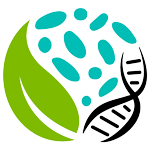Image-Based Methods to Score Fungal Pathogen Symptom Progression and Severity in Excised Arabidopsis Leaves
Mirko Pavicic, Kirk Overmeyer, Attiq Ur Rehman, Piet Jones, Daniel Jacobson and Kristiina Kimanen
15 January 2021, Plants (Basel) 10(1): 158; https://doi.org/10.3390/pants10010158
Abstract
Image-based symptom scoring of plant diseases is a powerful tool for associating disease resistance with plant genotypes. Advancements in technology have enabled new imaging and image processing strategies for statistical analysis of time-course experiments. There are several tools available for analyzing symptoms on leaves and fruits of crop plants, but only a few are available for the model plant Arabidopsis thaliana (Arabidopsis). Arabidopsis and the model fungus Botrytis cinerea (Botrytis) comprise a potent model pathosystem for the identification of signaling pathways conferring immunity against this broad host-range necrotrophic fungus. Here, we present two strategies to assess severity and symptom progression of Botrytis infection over time in Arabidopsis leaves. Thus, a pixel classification strategy using color hue values from red-green-blue (RGB) images and a random forest algorithm was used to establish necrotic, chlorotic, and healthy leaf areas. Secondly, using chlorophyll fluorescence (ChlFl) imaging, the maximum quantum yield of photosystem II (Fv/Fm) was determined to define diseased areas and their proportion per total leaf area. Both RGB and ChlFl imaging strategies were employed to track disease progression over time. This has provided a robust and sensitive method for detecting sensitive or resistant genetic backgrounds. A full methodological workflow, from plant culture to data analysis, is described.

